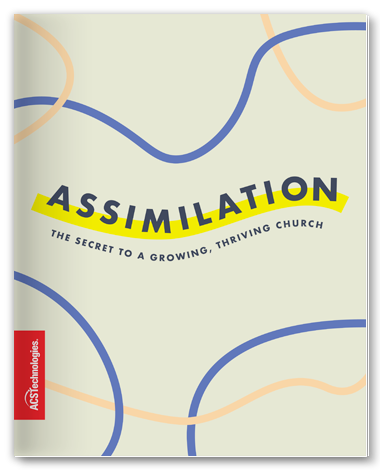Growth is a process. Getting older, advancing in a career, and spiritual maturity all involve a series of steps. The concept isn’t new to any of us, yet so many churches—especially larger churches—don’t handle this growth process well. And the challenges usually arise from a few key reasons:
#1: No sustained investment
We fail to realize the effort required for sustained success. Without consistent support and resources, failure is almost inevitable.
#2: No ongoing improvement
Assimilation isn’t “set it and forget it.” It’s an ever-evolving process. Doing it once and leaving it alone puts you on the path to struggle.
#3: No tool to track steps
An assimilation process involves a ton of details, especially with strong, growing churches that consistently attract people. Technology should be an asset in tracking these details.
Take a deep breath. We’ve all been there. Let’s check off that we’ve identified some of the challenges that bottleneck plenty of our churches, and now let’s look at three key factors and action steps central to healthy assimilation according to the recently published, Assimilation: The Secret to a Growing, Thriving Church:
Designate an owner
Decide who owns the assimilation process. Without an owner, there’s no one accountable for results.
Action: Who on your staff would be the best fit for this role?
Tip: Look for someone who sees the big picture but isn’t overwhelmed by details.
Define the path
Break down this journey into clear steps. The clearer and more specific you get with the path, the easier it is to move people forward.
Action: Spend a few hours in a room with key people and create the steps to get people to those milestones.
Tip: Most people may struggle in this step because the path looks like an unclear list of incomplete things- so use a whiteboard or sticky notes to sketch it out and move it all-around to be able to define it.
Delegate details to technology
As more people visit your church, more people enter your assimilation process. A ChMS is a great asset here. It should let you create a path for people. Then you’ll use your ChMS to ensure no one falls through the path to growth.
Action: Once you define the path, set up that path in your current technology tool.
Tip: Reach out to your customer success rep for help in setting this up.
We all want to belong to something, and we do belong to several “somethings”- art classes, book clubs, sports teams- we are diverse people with different interests and hobbies. A sense of belonging is what will draw the community to your church- especially after this pandemic, people want to come back to church– and be involved in something that matters.
Our soul cries out for more as it recognizes that hobbies are only time fillers and not foundational to the purpose in our lives. We’ve been called to go and make disciples. That’s a two-fold process- find them and make them. Plan the outreach event from beginning to end to include clear steps to assimilate your visitors so they ultimately experience spiritual growth and become part of the church family.
My prayer is that you will be able to identify your church’s growth challenges and that you’re encouraged in and equipped better in how to get people in the church door and keep those same people. And, in the event you missed it, there’s another blog, Assimilation: Unlock a Clear Path to Being a Stronger Church, about cracking the code to get people involved.
A growing church means people are coming. The music encourages them. The teaching makes them think. The environment welcomes their whole family. But a church only grows if those people stay. Why do they stay? By getting connected. In other words, by getting assimilated to the church. Our newest resource, Assimilation: The Secret to a Growing, Thriving Church, eliminates this frustration for you, your staff, and your church along with the other guides in the Know and Grow: Solutions to Large Church Problems. And, to make it even easier and so you don’t miss any of our Church Growth Resources, you can also receive our ministry blog posts straight to your inbox!
Pattie plays an integral role in key areas across ACS Technologies, including project management, business partnerships, operational excellence, and more. Pattie joined ACS Technologies in 1995. Before that, she worked in advertising and brand management leadership with Procter & Gamble. She also worked with Koinonia Partners, the birthplace of Habitat for Humanity. Pattie attends St. Catherine’s Episcopal Church in Florence, SC.





